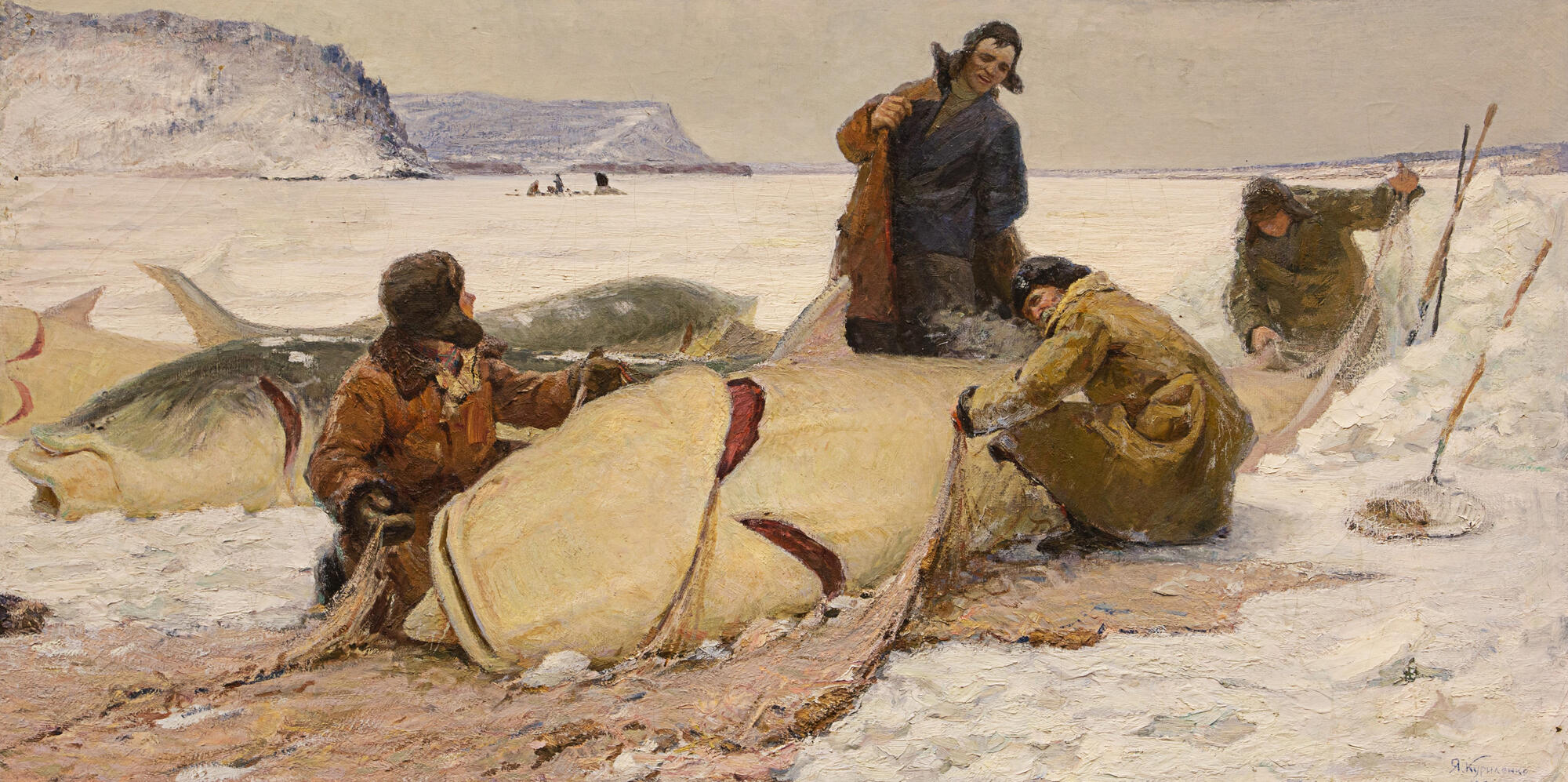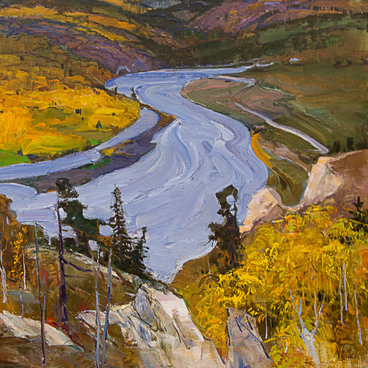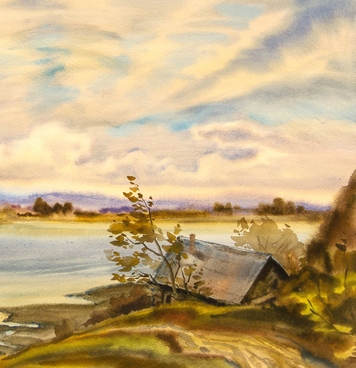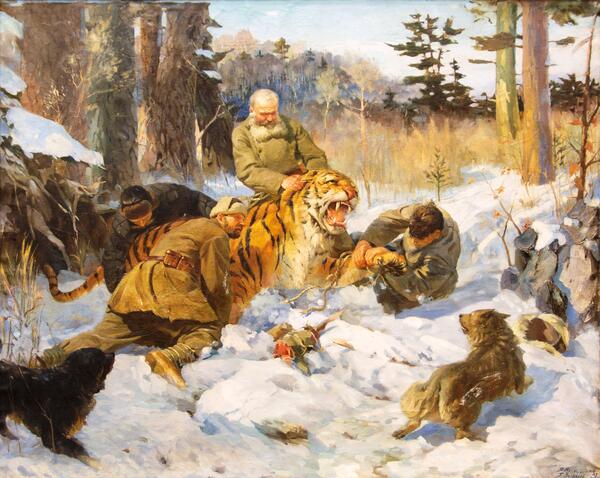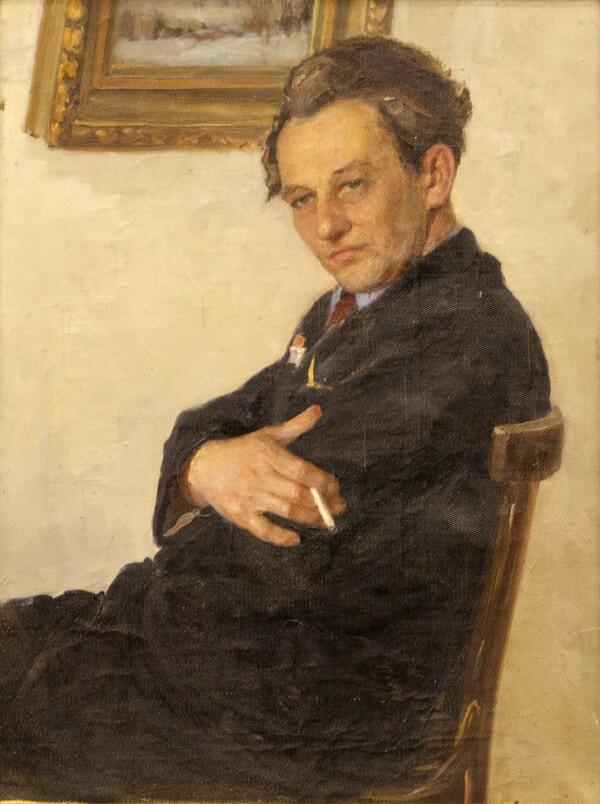Yakov Semyonovich Kurilenko (1917–1988) began his artistic journey at the Blagoveshchensk Art College. He graduated in 1937 and stayed there to teach. He continued to draw even during his service in the units of the Red Banner Pacific Fleet, and after the war ended, he decided to dedicate his life to painting.
A significant period of Yakov Kurilenko’s life from 1950 to 1962 is connected with Georgy Alexandrovich Tsivilyov’s studio, collaboration with Grigory Stepanovich Zorin, as well as his life and working in Komsomolsk-on-Amur. His painting “Kaluga Fishermen” was created during that time.
The work is performed in the spirit of realism and can serve as visual material for the history of the region.
The kaluga is an endemic species of the Amur River, the largest freshwater fish that has no natural predators. Its large size led to a nickname — “the queen of Amur waters”. According to records alone, this fish can reach a length of almost 6 meters and weigh up to 1,200 kilograms. The task of kaluga fishermen was difficult and dangerous: with a blow of its tail (the so-called sledgehammer), the kaluga easily knocked rivets out of duralumin seams of fishing boats.
The fishermen’s excited faces show that they are pleased with their impressive catch; one of the men is putting his coat back on, which indicates that the fight with the predator was most likely heated and uncomfortable.
A tasty fish with almost boneless flesh, kaluga was subjected to such an extreme hunt that eventually kaluga fishing in Russian waters was completely banned and was taken under strict state control in Chinese waters.
There are legends among fishermen associated with sturgeon fish, including the kaluga. For example, it was believed that the kidneys of a large fish had a miraculous “kaluga stone” — an oval stone the size of a chicken egg — and that it was an amulet against storms, brought luck in fishing, and cured illnesses. Such a rare find could be exchanged for goods of great value. According to another legend, the fish could go mad like a cat or a dog, and then its flesh became poisonous.
Although there is no evidence to support these stories, some fishermen still believe them to be true.
A significant period of Yakov Kurilenko’s life from 1950 to 1962 is connected with Georgy Alexandrovich Tsivilyov’s studio, collaboration with Grigory Stepanovich Zorin, as well as his life and working in Komsomolsk-on-Amur. His painting “Kaluga Fishermen” was created during that time.
The work is performed in the spirit of realism and can serve as visual material for the history of the region.
The kaluga is an endemic species of the Amur River, the largest freshwater fish that has no natural predators. Its large size led to a nickname — “the queen of Amur waters”. According to records alone, this fish can reach a length of almost 6 meters and weigh up to 1,200 kilograms. The task of kaluga fishermen was difficult and dangerous: with a blow of its tail (the so-called sledgehammer), the kaluga easily knocked rivets out of duralumin seams of fishing boats.
The fishermen’s excited faces show that they are pleased with their impressive catch; one of the men is putting his coat back on, which indicates that the fight with the predator was most likely heated and uncomfortable.
A tasty fish with almost boneless flesh, kaluga was subjected to such an extreme hunt that eventually kaluga fishing in Russian waters was completely banned and was taken under strict state control in Chinese waters.
There are legends among fishermen associated with sturgeon fish, including the kaluga. For example, it was believed that the kidneys of a large fish had a miraculous “kaluga stone” — an oval stone the size of a chicken egg — and that it was an amulet against storms, brought luck in fishing, and cured illnesses. Such a rare find could be exchanged for goods of great value. According to another legend, the fish could go mad like a cat or a dog, and then its flesh became poisonous.
Although there is no evidence to support these stories, some fishermen still believe them to be true.
